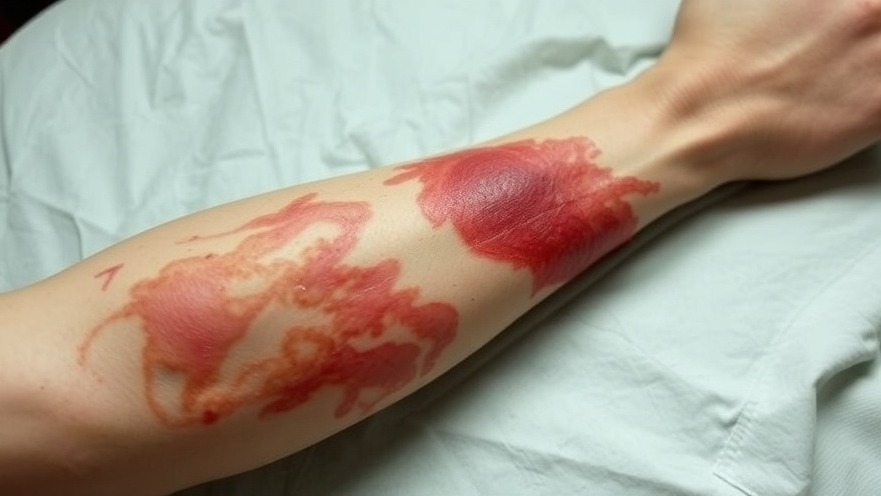
Revolutionary Advances in Skin Substitute Technology
Severe burns continue to pose significant challenges for both patients and healthcare providers, leading to extraordinarily high rates of morbidity and mortality. As highlighted by recent research from the University of South Australia and its affiliates, the advent of a new generation of skin substitutes offers substantial promise in improving recovery and survivability for burn victims.
Why Burn Treatment is Critical
Each year, thousands of individuals suffer from severe burns, with alarming statistics showcasing approximately 180,000 annual deaths globally. Many more endure the arduous path of hospitalization—around 10 million cases yearly. The economic impact of such injuries is staggering, costing healthcare systems around $112 billion globally. Traditional methods of treatment often rely on skin grafting, which can fail to provide adequate results, leading to complications like infections that significantly exacerbate recovery times.
A New Approach to Healing
The University of South Australia's comprehensive review in Advanced Therapeutics underscores the need for innovative alternatives to traditional skin grafts. The research emphasizes dermal substitutes—biochemicals that replace damaged skin, focusing on their critical roles in infection control and tissue regeneration. With traumatic burn wounds being exceptionally susceptible to bacterial infections, the need for integrated antimicrobial protection in skin substitutes is paramount.
Exploring Emerging Technologies
Among the technologies explored in the study, Kerecis—novel fish skin grafts—stand out due to their inherent antimicrobial properties. This distinctive feature helps to fortify the healing process and minimize the risk of infections during the recovery phase. Similarly, NovoSorb BTM, a synthetic biodegradable matrix that demonstrates resistance to bacterial colonization, is paving the way for more effective treatment options for severe burn injuries.
Case Study: Kerecis in Action
Kerecis exemplifies the application of natural resources in modern medicine. The fish skin is not only biocompatible but also rich in the nutrients necessary for wound healing, offering a dual benefit of structural support while simultaneously combating infection. This innovative solution may drastically reduce the duration of hospital stays and improve overall patient outcomes, transforming the treatment paradigm for severe burn injuries.
The Importance of Innovation
The urgency to innovate in this field cannot be overstated. As Dr. Zlatko Kopecki points out, the rhetoric surrounding burn treatment must evolve to include methods that not only heal but also prevent the onset of infections. Harnessing modern science and technology will undoubtedly pave the way for significant improvements in patient care, especially as newer therapies emerge.
Managing Patient Expectations
For health practitioners, staying abreast of these advancements is crucial. The landscape of burn treatment is evolving, and the adoption of advanced technologies such as Kerecis and NovoSorb BTM provides an opportunity to educate patients about their treatment options. Enhancing patient understanding of what to expect during recovery can alleviate anxiety and foster a supportive healthcare environment.
A Call for Action
As we forge ahead in the treatment of severe burns, it is imperative for health practitioners to remain informed about emerging technologies in skin substitutes. By integrating these advancements into practice, healthcare providers can significantly enhance patient care, reduce costs, and ultimately save lives.
In this swiftly advancing medical landscape, knowledge and implementation of innovative treatments will enable practitioners to not only improve recovery rates but redefine what is possible in burn care. Understanding these advancements is not just beneficial—it is a necessity in prioritizing better health outcomes for patients experiencing trauma from burns.
 Add Row
Add Row  Add
Add 




Write A Comment